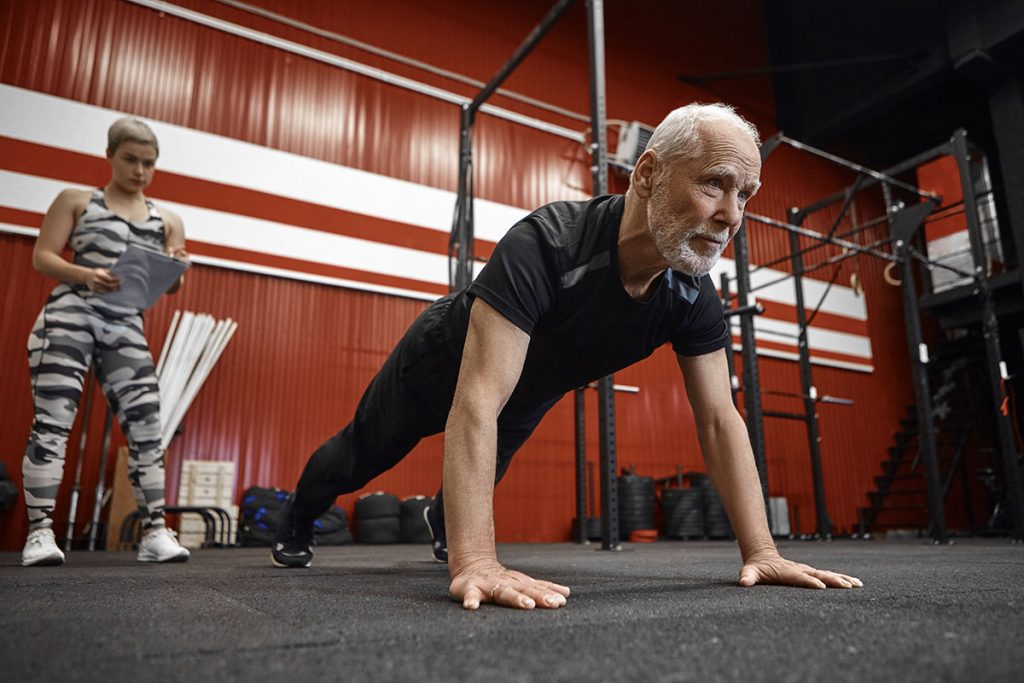Working out does increase testosterone (T) levels — but not all exercise is created equal.
Moreover, if you’re trying to increase your testosterone levels, you may want to add other T-level-boosting activities to your exercise program.
Keep reading to learn about the link between exercise and T levels, what exercises will (and won’t) increase your T levels, and how you can naturally increase your T levels.
The link between exercise and testosterone
Some types of exercises increase T levels. But your biological sex and the type of exercise you do influence how your T levels are affected.
Here’s a little background on just how T levels work in different people.
Testosterone production
Testosterone is typically referred to as the sex hormone in men. But it’s found in everyone’s bodies — just not in the same amounts.
The adrenal glands also produce a little bit of testosterone. But depending on your sex, different areas produce different amounts.
In men, high levels of testosterone are produced in the testicles. T levels are among the primary hormones that contribute to changes that happen during the teenage years. These changes include:
- getting more muscle;
- growing facial and pubic hair;
- lowering your voice.
In women, testosterone is produced in the ovaries in smaller amounts.
But healthy T levels are important for everyone throughout life. This is especially important as you get older to preserve your overall health and reduce your risk for certain conditions, like:
- obesity;
- type 2 diabetes;
- heart disease.
How exercise affects testosterone levels
Here’s what the research says about the impact of exercise on T levels:
- A 1983 study of T levels in men and women after lifting weights found that men experience significant increases in testosterone while women experience almost no increase.
- A 2001 study of women found that resistance training can temporarily increase testosterone and have an impact on fat distribution.
- A 2004 study of older men found that regular physical activity increased testosterone and growth hormone (GH) levels as well as had a positive effect on brain function.
- A yearlong exercise study published in 2008 of 102 men who previously didn’t exercise much found that levels of dihydrotestosterone (DHT) increased by 14.5 percent.
- A 2012 study of men found that exercising regularly was linked to higher T levels than men who were sedentary (didn’t work out at all).
- A 2016 study of men with obesity found that regular exercise did more to increase T levels than even lose weight.
- And having healthy or heightened T levels can actually help you build more muscle than if your T levels are slightly or very low.
Best exercises to increase testosterone
As mentioned earlier, not all exercises affect T levels in the same way. Here are some of the best exercises that can help increase testosterone.
Resistance training
Resistance exercises are proven by research to help increase short- and long-term T levels.

Resistance training like weightlifting is the best type of exercise to boost testosterone in both the short and long term. It’s been found to be especially helpful for men.
A 2007 study found that men who did strength/resistance training 3 days a week for 4 weeks were linked to increases in T levels right after a workout and over time.
But the effects aren’t the same for everyone. In an older study, one 30-minute weightlifting session increased T levels by 21.6 percent in men, but only 16.7 percent in women.
And some researchTrusted Source suggests T-level gains may only be temporary in women.
Another older study found that T levels increased in both young and older men after three sets of 8 to 10 weightlifting reps. But other sex hormones like GH were much more likely to spike in younger than older men.
High-intensity interval training (HIIT) for men
HIIT is another proven way to boost testosterone, but only in men.
One study in men found that interval training consisting of 90 seconds of intense treadmill running interspersed with 90-second recovery periods boosted free T levels more significantly than simply running for 45 minutes straight.
And other studies have supported this link, too:
- A 2013 study found that taking DHEA supplements along with five sessions of 2-minute cycling exercises increased T levels in younger and older men.
- A 2014 study found that HIIT increased T levels in men.
Exercises that won’t increase testosterone
Women need healthy T levels just like men.
But high T levels can be more harmful to women after a certain point. It can cause abnormal hair growth, balding, and acne.
And some of the same exercises that boost T levels in some can have the opposite effect on others.
HIIT for women
HIIT has been shown to reduce testosterone in women. This can be beneficial if T levels are too high.
A 2016 study found that a 20-minute interval exercise consisting of 8 seconds of cycling and 12 seconds of rest lowered T levels in women.
Cardio
There’s no evidence that cardio has any impact on your T levels, no matter your sex. In fact, too much cardio may reduce your T levels.
But weight loss, in general, can help balance your T levels and other factors that contribute to healthy levels of all hormones.
Other tips for naturally increasing testosterone
Here are some tips for increasing testosterone aside from (or in addition to) exercising:
- Eat a diet high in protein, fat, and carbs.
- Reduce your stress and levels of cortisol.
- Get out in the sunshine, or take vitamin D supplements.
- Try other vitamin supplements, such as zinc and vitamin B.
- Get about 7 to 10 hours of sleep every night.
- Take natural herbs, such as ashwagandha, horny goat weed, and ginger.
For men, avoid exposure to chemicals that can increase natural estrogen, like BPA.
The takeaway
Resistance training and HIIT can both cause beneficial boosts to T levels, especially in men.
But having T levels that are too high can actually be harmful, especially in women.

